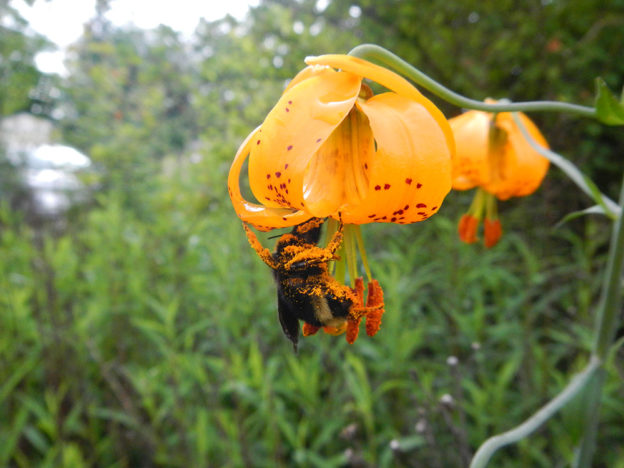Welcome to EMSWCD’s Nature Notes series! Nature Notes shares small moments and interesting observations from our property, as well as related natural history tidbits, on a weekly to monthly basis.
July 1stth, 2019
Helping protect the environment one choice at a time
Summer and vacation season are in full swing! As we head to the beach though, we are also hearing story after story of an environment in trouble. The good news is that there is a lot we can do. From the plants in our yard to the type of sunscreen we wear, our daily choices really do matter.
- One of the hundreds of invasive Tree of Heaven seedlings that popped up on our EMSWCD grounds. If spotted early these can be easily pulled by hand.
Planting with native plants has a cascading effect that makes the urban environment healthier for wildlife. Non-native and invasive species mean less food for insects, which in turn means less food for birds and fish. Invasive species are everywhere, even on EMSWCD grounds. Last summer we fought a large tree of heaven infestation; this summer we have manually removed English ivy, nutsedge, mullein, white sweetclover, yellow oxalis and several other invasive plants. Removing weeds by hand whenever possible is both good exercise and far better for the environment than using chemicals.
Even personal care choices, such as the type of sunscreen we wear every day, have the potential to help or harm the environment. Scientists have found that some of the most common chemicals in sunscreen (such as oxybenzone, butylparaben, octinoxate, and 4-methylbenzylidene camphor) are toxic to coral reefs. Water treatment plants do not treat for many chemicals in household products, cosmetics, food or medicines, and many of their effects in the environment are unknown.
Wherever we can reduce unnatural inputs to the environment, whether it is in our landscaping practices or consumer choices, we are helping create a healthier world.


